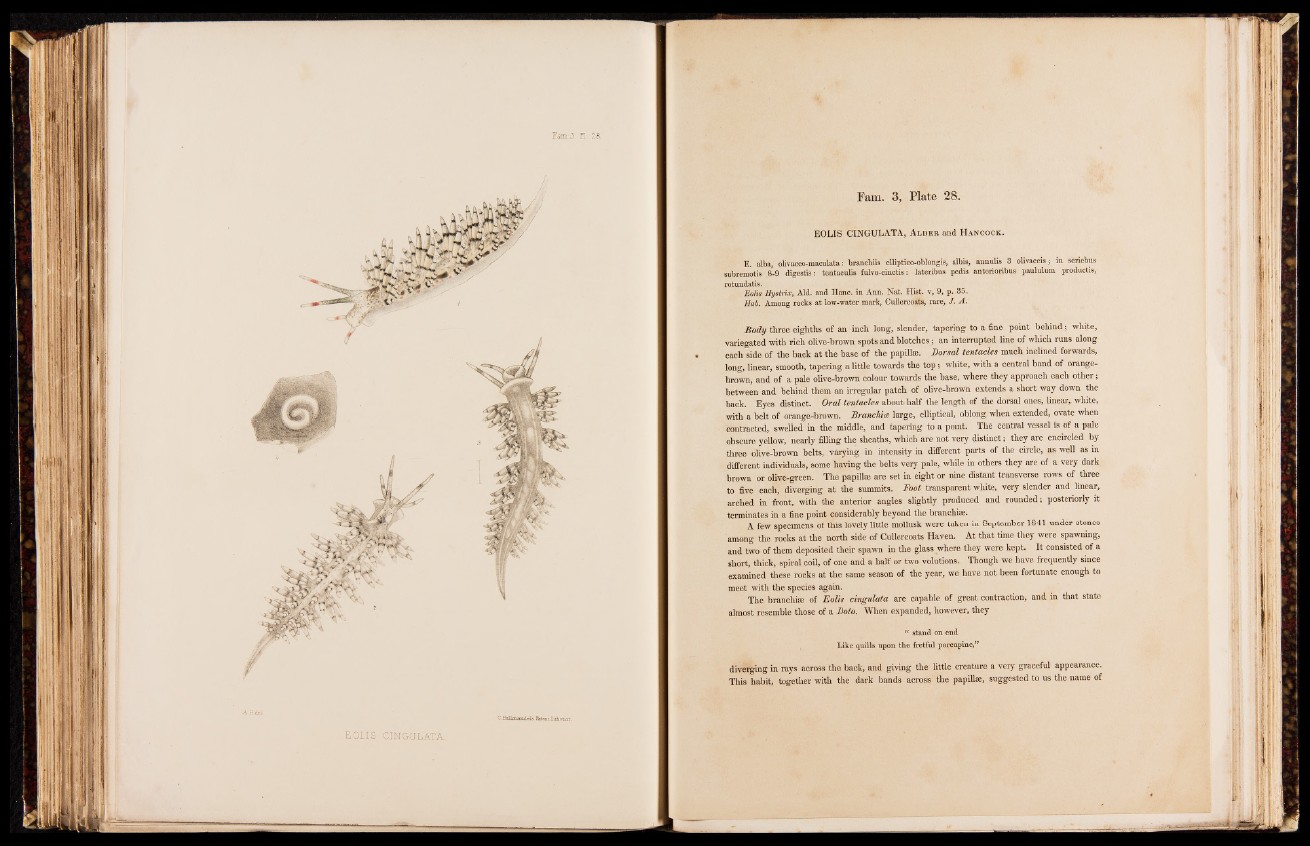
EOLIS CINGULATA, A l d e r a n d H a n c o c k .
E. alba, olivaceo-maculata: branchiis elliptico-oblongis, albis, annulis 3 oHvaceisp in seriebus
subremotis .8-9 digestis: tentaculis fulvo-cinctis: lateribus pedis anterioribus paululum productis,
rotundatis.
Eolis Hystrix, Aid. and Hanc. in Ann. Nat. Hist, v, 9, p. 35.
Hab. Among rocks at low-water mark, Cullercoats, rare, J. A.
Body three eighths of an inch long, slender, tapering to a fine point behind; white,
variegated with rich olive-brown spots and blotches; an interrupted line of which runs along
each side of the back at the base of the papillae. Dorsal tentacles much inclined forwards,
long, linear, smooth, tapering a little towards the to p ; white, with a central band of orange-
brown, and of a pale olive-brown colour towards the base, where they approach each other;
between and behind them an irregular patch of olive-brown extends a short way down the
back. Eyes distinct. Oral tentacles about half the length of the dorsal ones, linear, white,
with a belt of orange-brown. Branchia large, elliptical, oblong when extended, ovate when
contracted, swelled in the middle, and tapering to a point. The central vessel is of a pale
obscure yellow, nearly filling the sheaths, which are not very distinct; they are encircled by
three olive-brown belts,. varying in intensity in different parts of i the circle, as well as in
different individuals, some having the belts very pale, while in others they are of a very dark
brown or olive-green. The papillae are set in eight or nine distant transverse rows of three
to five each, diverging at the summits. Foot transparent white, very slender and linear,
arched in front, with the anterior angles slightly produced and rounded; posteriorly it
terminates in a fine point considerably beyond the branchiae.
A few specimens of this lovely little mollusk were taken in September 1841 under stones
among the rocks at the north side of Cullercoats Haven. At that time they were spawning,
and two of them deposited their spawn in the glass where they were kept. I t consisted of a
short, thick, spiral coil, of one and a half or two volutions. Though we have frequently since
examined these rocks at the same season of the year, we have not been fortunate enough to
meet with the species again.
The branchiae of Eolis cingulata are capable of great contraction, and in that state
almost resemble those of a Doto. When expanded, however, they
“ stand on end
Like quills upon the fretful porcupine/’
diverging in rays across the back, and giving the little creature a very graceful appearance.
This habit, together with the dark bands across the papillae, suggested to ns the name of